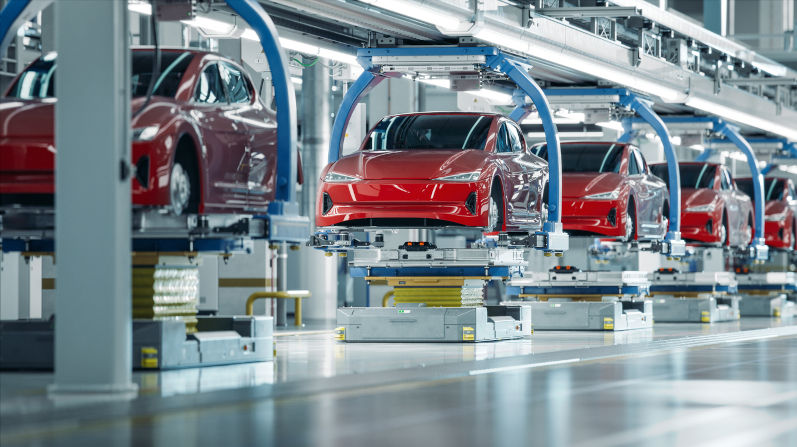China’s shift to quality is redrawing Southeast Asia’s tech map
August 19, 2025
On 1 August, China’s state planner announced a crackdown on “herd behaviour” in emerging industries, targeting the surge of capital into hot sectors such as electric vehicles, batteries and solar.
Officials warned against “blind imitation” where firms large and small pile into the same space, sparking price wars and overcapacity.
This frenzy, often dubbed _neijuan_ or “involution” in China, has become a major liability. The new rules aim to prevent chaotic boom-bust cycles and enforce investment discipline, even as innovation is still encouraged.
This is a necessary shift as industries, including EVs and solar, are drowning in excess capacity and collapsing margins. Beijing is now steering away from brute-force growth, towards high-quality development, where standards and sustainability matter more than speed.
Rather than a retreat inward, this is a strategic reset that will reshape how Chinese capital moves globally, especially in Southeast Asia. By cooling speculative excess at home, China is preparing its firms to expand abroad more selectively and sustainably. Nowhere will this be felt more than in Southeast Asia, where Chinese money has surged in recent years. The “herd behaviour” curbs are likely to slow erratic capital flows into the region and promote longer-term industrial partnerships instead.
For starters, the crackdown marks a shift from chaotic growth to sustainable innovation. In recent years, Chinese firms have slashed prices to win market share, sacrificing quality and profits. Officials now warn that such extreme competition is self-destructive. President Xi Jinping has called for breaking the cycle of “involution” and elevating standards.
The message is clear: competition must have limits, and innovation must be orderly. China is raising the bar for new industries rather than closing the door. By curbing overcapacity and enforcing rules, Beijing is trying to cultivate an ecosystem that prizes durability over hype.
Now we are seeing a clear consequence of this domestic shift: a more disciplined home market is already pushing firms into Southeast Asia’s manufacturing base in a more calculated way. The EV industry is one example. As competition at home intensifies, Chinese carmakers have turned to Southeast Asia — especially Thailand — to sustain growth. More than US$3 billion has flowed into Thai EV factories in recent years, helping Chinese brands capture more than 70% of the Thai EV market.
However, this wave has also echoed China’s chaotic domestic scene, with discount wars and struggling smaller entrants.
China’s new policy will favour stronger players with long-term strategies. BYD, for instance, is expanding with clear intent in Thailand and aligning with local development plans. The result is fewer hopefuls rushing in and more focused bets on stability and quality.
Just as significantly, China’s crackdown on speculation is cooling the hot-money flows that have previously unsettled regional markets. This isn’t new. In 2017, China cracked down on “irrational” overseas acquisitions that saw firms splurging on entertainment and real estate. However, capital was not cut off, but was instead redirected towards strategic sectors such as infrastructure and manufacturing.
The same is happening now. The herd investment curbs send a clear message: no more chasing fads, either at home or abroad. Chinese firms and funds are being pushed to prioritise viability over hype.
For Southeast Asia, this is likely to mean a more measured inflow of Chinese capital. Instead of unpredictable surges into property or tech start-ups, we could see more deliberate moves into manufacturing, supply chains and infrastructure. Chinese companies are proving agile in adjusting to local dynamics, suggesting their investment footprint in Southeast Asia will become more strategic and less speculative.
Beyond that, China’s policy reset could deepen its industrial ties with Southeast Asian countries. By discouraging redundancy at home, Beijing is nudging its strongest firms to seek growth abroad, especially in Southeast Asia. We are already seeing an increasingly integrated manufacturing network between the two.
In Indonesia, Chinese firms now control about 75% of nickel refining capacity, a process vital for EV batteries. This dominance isn’t just about resource extraction; it involves smelters, tech transfer and long-term partnerships that support Indonesia’s industrial ambitions.
What’s changing now is China’s approach: future expansion will be more aligned with local priorities, more regulated and more enduring. Rather than dumping goods or chasing fast profits, Chinese firms are more likely to form joint ventures, share technology and invest in long-term capacity. That benefits regional countries, which will receive infrastructure, financing and know-how while China avoids the pitfalls of saturation at home.
With bilateral trade now nearing US$1 trillion, China’s economic future is increasingly tied to Southeast Asia. The new discipline is about protecting that stake, ensuring outbound investments are resilient rather than reckless.
At the same time, China’s pivot is also forcing a regional rethink. Southeast Asia’s other partners are responding to increased competition, as seen in Japan and the ASEAN planning a joint strategy on automobile production and sales in the region to counter China’s rapid gains.
With Chinese companies now operating under a mandate for quality and discipline, host nations can expect more stable engagement. Venture capital could shift towards sectors such as semiconductors or AI with real regional relevance.
A new model with less froth and more substance is emerging. By tightening controls at home, China is also tightening its grip abroad – not through floods of easy money, but through focused investment that could shape Southeast Asia’s development trajectory for years.
Republished from South China Morning Post, 18 August 2025
The views expressed in this article may or may not reflect those of Pearls and Irritations.
